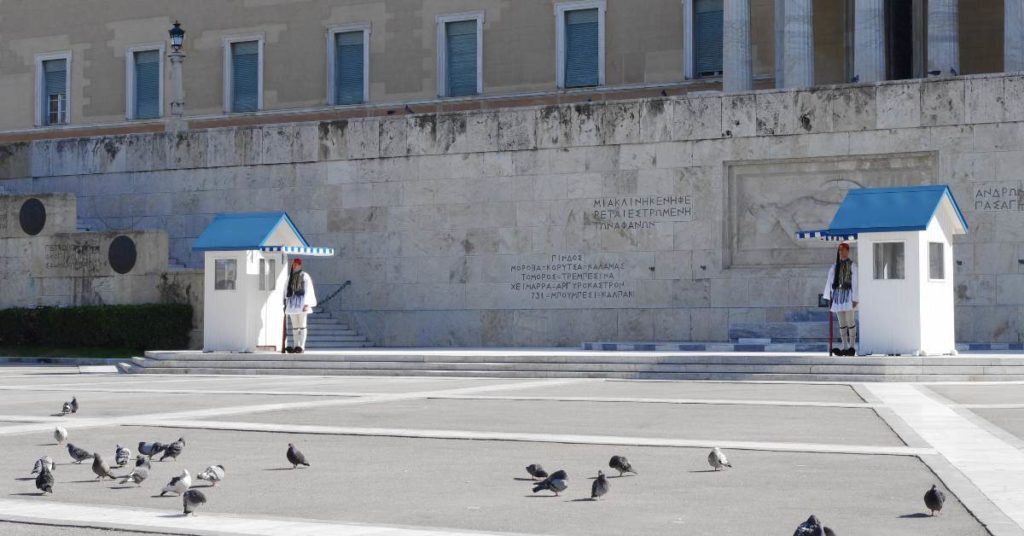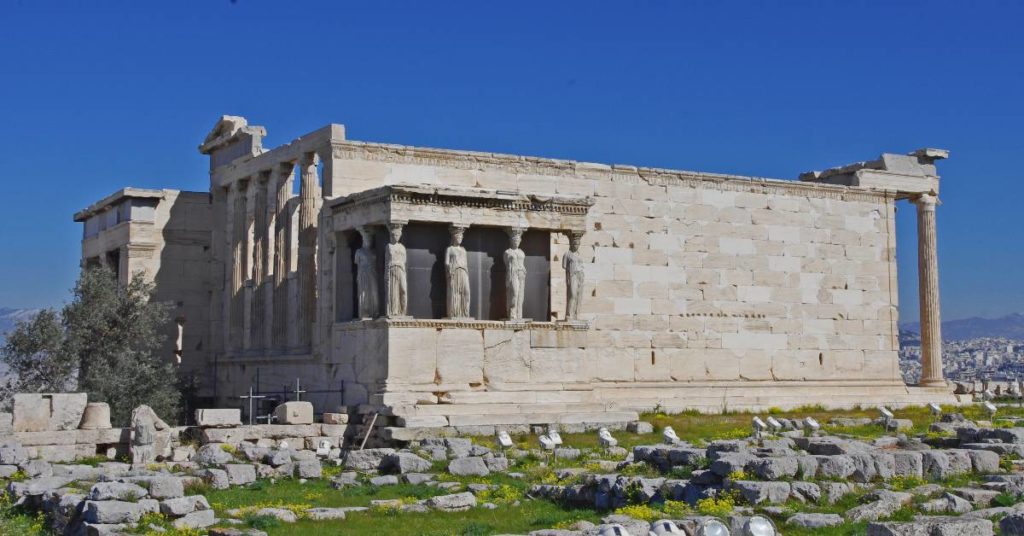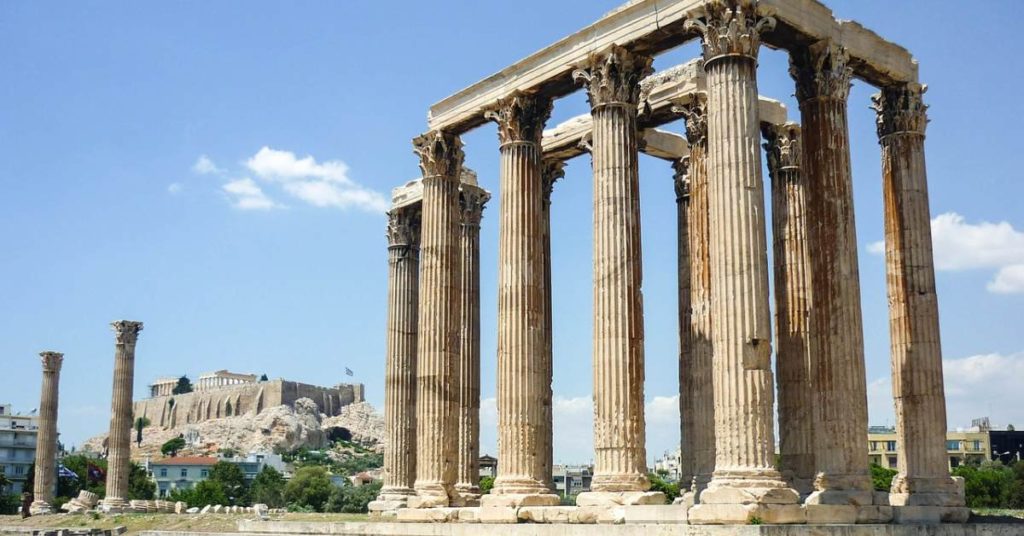The implied reason for people asking “How many days in Athens do I really need?” is because most are anxious to complete their checklist of famous sites, and hop on a plane or ferry boat to the romantic Greek islands.
Well, Athens may not be as romantic as Paris or as glamorous as London, but as the oldest European capital, it offers more than mere glam and love locks.
The Greek city lies in the heart of the ancient culture, basking in grandeur and remnants of a well-celebrated history. It’s been a beacon for globally-acclaimed philosophers, most famously Aristotle, Plato, and Socrates.
Before we jump to the itinerary, a small bit of historical background…
It’s believed that Poseidon and Athena fought for the city’s title, and Athena won with her olive branch. Athena’s olive branch may not have given Athens the peace it wants or deserves, but the city came out unscathed from plenty of wars.
Surviving through the Peloponnesian war with Sparta and the Greco-Persian wars with the Persians, Athens ended up with some magnificent historical ruins and plenty of untold stories.
So if you want to visit the city that witnessed Socrates’ heyday and scheduled his death in one of the ancient world’s most controversial trials, here’s a full Athens itinerary covering all the important ancient sites.
How Many Days in Athens – 3-Day Itinerary
Although three days are nowhere near enough to enjoy the splendor of the ancient Greek city, they’re enough to visit the most famous sites. If you’re on a whirlwind Euro-trip, have other cities to visit in Greece, or are anxious to get to the islands, you’ll likely only have three days or less for Athens. In this case, here’s an Athens itinerary to guide you.
The order of the trip’s days doesn’t matter. What’s important is to group the sites you want to visit correctly, so you know what places are close to each other. Here’s a detailed guide to places you can visit in a single day.
Places to Visit on Day #1
Ancient Agora
In ancient Greece, Agora was an open public space used by citizens for various activities. It lies on the northwestern side of the Acropolis, and it’s home to some pretty popular sites like the temple of Hephestus.
Ancient Agora also hosts the Stoa of Attalos II, which was witness to major historical events. It was under that stoas that Socrates was put on trial and sentenced to death in one of history’s most controversial moments.
The current building doesn’t look like the original thing. American archeologists reconstructed it in the ‘50s. However, it’s still interesting to visit the place where judges decided to put one of the world’s most influential philosophers to his last breath.
Syntagma Square
Syntagma Square is only a 15-minute walk from Ancient Agora, so it only seems logical to include them on the same day. Syntagma square has a modern edge that gives you a break from the city’s ancient vibes.

You can walk around, have a meal, or go shopping in the square. You can also visit the Parliament Building and witness the guards-changing ceremony. It happens every hour, so it’ll be easy to catch it. You’ll get to see the guards changing their shifts and paying homage to the war victims. It only lasts for a few minutes, but it’s a sight to see.
The National Archeological Museum
You wouldn’t want to visit Athens without passing by the National Archeological Museum. It’s only a 5-min taxi ride from Ancient Agora, so it’ll be easy to include it in your day.
One of the most interesting pieces you’ll see inside the museum is the Gold-Death Mask. It dates back to the life of Agamemnon, and it’s otherwise called the Mask of Agamemnon. It supposedly belonged to a king, but no one is sure of his identity. The mask is believed to have been an imitation of Ancient Egyptian masks.
Another fascinating piece in the museum is the mystery statue—a bronze piece of art that no one knows who it belongs to. It’s a large, naked statue that’s entirely made of bronze.
The theories are it’s either Zeus or Poseidon, but we’re likely not getting an answer soon. So why don’t you give it a look and share your thoughts?
Places to Visit on Day #2
The Acropolis

The Acropolis isn’t only the most popular ancient site in Greece, but it’s one of the world’s most famous historical attractions. It triumphantly stands over the ancient Greek city, casting a shadow of pride that the Athenians are still basking in today.
The most celebrated piece of the Acropolis is the Parthenon, Athena’s temple. It was once used as a church and once altered into a mosque. Today, it’s kept as its original image, a temple dedicated to the city’s guardian’s goddess.
The Parthenon reflects the forbearance of Athens, standing in the face of multiple alternations and natural disasters, yet preserving its form and identity to this day.
The Acropolis is full of fascinating ruins and remnants, so try to give it a good share of your day. You’ll get to take some pretty good photographs there!
Odeon of Herodes Atticus
The Odeon of Herodes Atticus is on the southwestern slope of the Acropolis, and you wouldn’t want to miss it. It was one day Athens’ most famous theater, hosting classical performances and musical events.
In 267 B.C, the theater was destroyed by Heruli’s forces, and it was never fully reconstructed. Nevertheless, its remnants are still used for theatrical purposes, and it fits nearly 5000 attendants. Many musicals are performed there; you can attend one if you get the schedule beforehand.
The Temple of Zeus
The Temple of Zeus is a mere 12-minute walk from the Acropolis, and it’s well worth a visit. The edifice was built to celebrate the chief of gods of Greek mythology. And like the city it lies in, it stood in the face of many unfortunate incidents.

In AD 426, the forces of Theodosius II burnt the temple, and earthquakes in AD 551 further brought it down. What stands now is a mere skeleton of what the temple once was, standing on only 15 of the original 105 Corinthian columns.
Panathenaic Stadium
Although built in 566 B.C, the Panathenaic stadium is still in use today. The horseshoe-shaped arena hosted the 1896 Olympic Games, gaining unrivaled fame that it still enjoys today.
But that’s not the only fascinating fact about the Panathenaic Stadium. For me, it’s the marble construction.
The stadium is the only one in the world that’s entirely made out of marble, and that’s something you’d want to see on your Athens visit.
Places to Visit on Day #3
The Arch of Hadrian
After you’re done exploring the wonders of the Acropolis, you can pay a visit to the Arch of Hadrian on your last day of the trip. It’s otherwise called Hadrian’s gate, but the name is seldom used because there’s another monument with the same name in Turkey’s Antalya.
The Arch of Hadrian connects the southeastern part of Athens to the Acropolis. It wasn’t destroyed by any forces, but the pollution of the modern age had its toll on its marble construction. Now, it stands to its original full height, but it’s missing the entire lower level.
Monastiraki Square
Monastiraki square is one of the globally-acclaimed tourist attractions in Athens. It’s not ancient, but it’s lined by cafes and outdoor vendors selling interesting Greek souvenirs. It’s also strategically positioned in the heart of Athens, so you can grab a ride to any attraction you have next.
The square is full of colorful murals and wall graffiti. Without political restraints, the Atheniaias unleashed their creativity on the square’s walls, and you can enjoy the artworks while there.
After walking around the Monastiraki square, you can walk to the Monastiraki market. On Sundays, it’s dedicated to flea sellers, and you can find all kinds of products there.

On regular weekdays, the market is full of vendors and shops for handmade products. You’ll find all kinds of artifacts and imitations of real ancient monuments. Some shops also sell musical instruments and leather goods. If you want to buy souvenirs for your family, this is the place to do so.
Plaka Neighborhood
The Plaka neighborhood is only a 10-minute walking distance away from Monastiraki. Walking there, you’ll get to see cute decorated houses, vintage boutiques, outdoor vendors, and beautiful wall art on the streets.
The thing about Plaka is, the streets are only open for pedestrians. So you won’t be bothered by any cars or vehicles driving around you. All you’ll be seeing are beautiful streets, traditional buildings, and a lot of ice cream stores!
If you want the cherry on top of the cake, you can pay a visit to the Museum of Greek Folk Art in the neighborhood.
The Takeaway
With this full Athens itinerary, you should have an idea of what your trip will look like. If your trip is only two days, you can ditch the Monastiraki square trip and only visit the Syntagma square near Ancient Agora.
On the other hand, if your trip extends to four days, you can dedicate a day to visit towns close to Athens, have a cruise to one of the neighboring islands, or go for a hike in Greece.
Athens is magnificent, to say the least, and you’ll enjoy any activity you do there under the shadow of ancient history.
